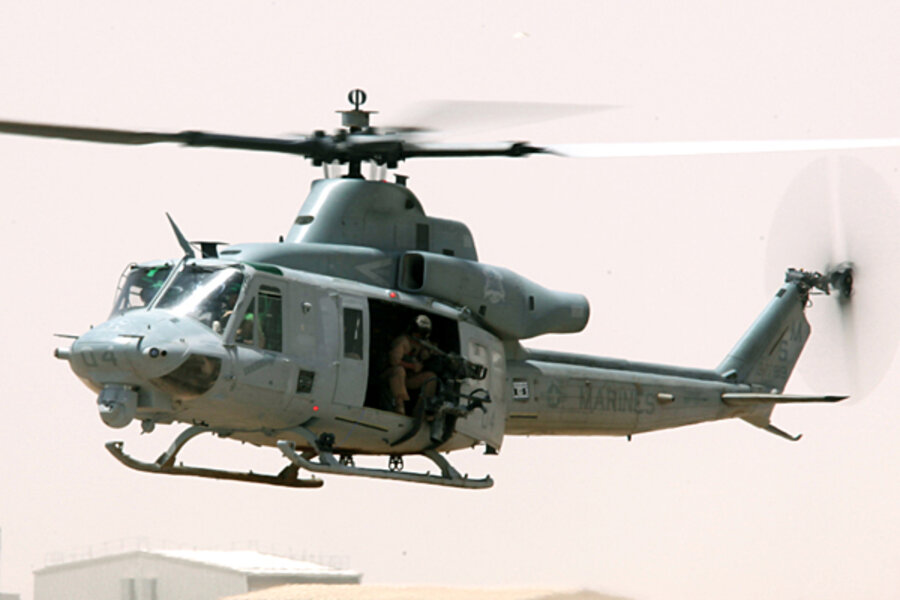Fatal helicopter crash underscores hazards of Marines' mission training
Loading...
| Washington
A midair collision of two Marine Corps helicopters late Wednesday – in which seven US troops died – brings into sharp focus the dangers of routine military training missions and continues a recent uptick in dangerous accidents within the corps.
The crash occurred in a remote training area of Marine Corps Air Station Yuma, which sits along the Arizona-California border and is home to some 4,000 Marines.
Nearly a dozen serious aviation accidents involving on-duty Marines occurred in 2011. In total, 13 Marines have been killed in such crashes since October.
The Marines call them “Class A Mishaps,” yet the moniker belies the serious nature of these events. They are defined as crashes resulting in $2 million or more in property damage, or in which a Department of Defense aircraft is destroyed, or in which “an injury or/and occupational illness results in a fatality or permanent total disability,” according to Capt. Brian Block, a Marine Corps spokesman.
Crashes are up sharply, from five such accidents in 2009 and five in 2010. “When they see a jump like this, they’ll look into it and see if they can find a common element,” says Rick Nelson, a former Navy helicopter pilot who has worked in Joint Special Operations Command and now a senior fellow at the Center for Strategic and International Studies.
The Marines on board the helicopters were preparing to deploy to war, and the exercises in the remote area of the training center simulate what they would expect to see in Afghanistan.
“Yuma is probably more like southern Afghanistan than anywhere in the United States,” with flat, open desert and jagged rocky mountains, says Mr. Nelson. Such training often requires Marines to fly in a formation, over a desert replete with dust storms and haze, he adds.
The collision is under investigation. What’s clear is that the base is a training hub for Marines to practice aerial fire support for troops fighting on the ground. The helicopters are equipped with rockets, Hellfire missiles, and machine guns.
Yuma brings in “an average of 600 aircraft and 14,000 personnel for ongoing training that takes place throughout the year,” according to the station website.
The collision Wednesday night involved an AH-1W Super Cobra attack helicopter and a UH-1Y Venom, also known as a Super Huey.
The Super Cobra is described as “the backbone of the United States Marine Corps’ attack helicopter fleet." But it is slated to be replaced by an AH-1Z Viper “upgrade over the next decade.”
The Venom is a utility chopper, “in production to replace the Marine Corps’ aging fleet of twin light Huey helicopters that the service has used since “the early 1970s,” according to a Marine Corps information document. It can reach a maximum speed of 189 miles per hour and fly at altitudes as high as 20,000 feet.
“These guys are flying in extremely demanding environments,” Nelson says. “The fact that our accident rate is as low as it is is remarkable, given the missions and the training.”
The midair collision Wednesday will likely prompt two separate investigations – one to look for fault and the other a “nonpunitive” investigation to examine safety factors that might be adjusted. Such an investigation “encourages people to be forthcoming in what happened without fear of retribution or punishment,” Nelson adds, “so they can actually fix what went wrong.”







